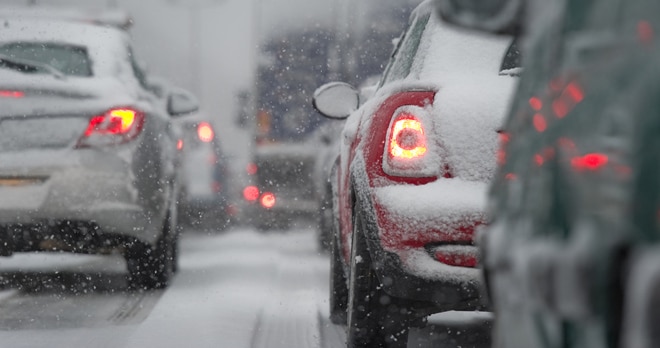Tips for driving in winter

A lot of accidents happen in the winter months as not only are we faced with longer periods of darkness, we also have to combat potential ice, snow, fog, along with our ever present level of rainfall.
Many injuries are caused by accidents arising in freezing conditions, so here's how you can prepare for your potential hazardous journeys during the winter season:
Prepare yourself:
- Do you know the route? If you are travelling somewhere new, be sure to check out the route before setting off. Stick to major roads if the weather is particularly bad.
- What is the weather forecast for the day?
- Do you have what you need to be prepared for a sudden drop in temperatures, or a heavy downfall of snow? Weather conditions can change rapidly, so make sure you keep an eye on the local updates for your journey.
- Do you have suitable supplies for your trip, just in case you get stranded in cold temperatures i.e. warm clothing?
Prepare your vehicle:
- Have you had recent service?
- Has your car undergone the essential checks?
- Are your fluids topped up, particularly your oil, screen wash and antifreeze? Antifreeze only costs a few pounds; the damage caused from a frozen engine can cost hundreds.
- When was the last time you checked your tyres? Do they have enough tread? If you regularly travel on hazardous roads, i.e. lanes and back roads, do you require winter tyres?
- Have you got a winter car care kit – de-icer, lock spray, scraper, WD40, rag/chamois etc?
- Do you have a spare tyre and the tools required to change a tyre, including the locking wheel nut (where applicable)?
- Do all of your lights work, including the fog lights?
- Do you require new windscreen wipers?
- Are the brakes working adequately?
- If you do not plan on using your car for a period of time, be sure to start it and let it run until it has warmed up every few days. This will help the battery stay sufficiently charged. Driving in the winter puts an awful lot of strain on the battery due to the extended use of the lights, wipers and heaters. Remember, batteries usually last for around 5 years, so they will need changing at some point. Being prepared by changing your battery towards the end of its life could save you a lot of time and inconvenience should it break down on the road.
Wherever possible, we would recommend that you avoid using your motor vehicle in heavy snow unless your vehicle is equipped to deal with all conditions to eliminate the risk of being involved in, or causing an accident.
It is recommended that if you do find yourself driving in freezing conditions that you stick to major roads. They are more likely to have been treated in preparation for the change in weather.
If you get stuck in the snow, straighten the wheels and clear the snow from around them. Find something that will give you some traction, an old towel for example. Place them in front of the drive wheels as this will give them more grip. Pull away gently and try to avoid any wheel spin. Do not stop to collect the items you just used to gain traction until you have reached firmer ground.
Tips for travelling in the snow
- When driving in snow and ice, gentle manoeuvres are the safest way to navigate your journey. Stopping distances are also 10 times longer.
- Pull away slowly in second gear to reduce the risk of wheelspin.
- When needed, apply your brakes gently.
- When travelling uphill, wait until it is clear, to avoid having to stop part way up.
- When travelling downhill, select a low gear and avoid using the brakes unless necessary.
Most importantly, put safety first. Get up earlier so that you don’t need to rush. Allow extra time to de-ice and demist the windows. Accept that you may be late for work, just drive accordingly for the conditions.